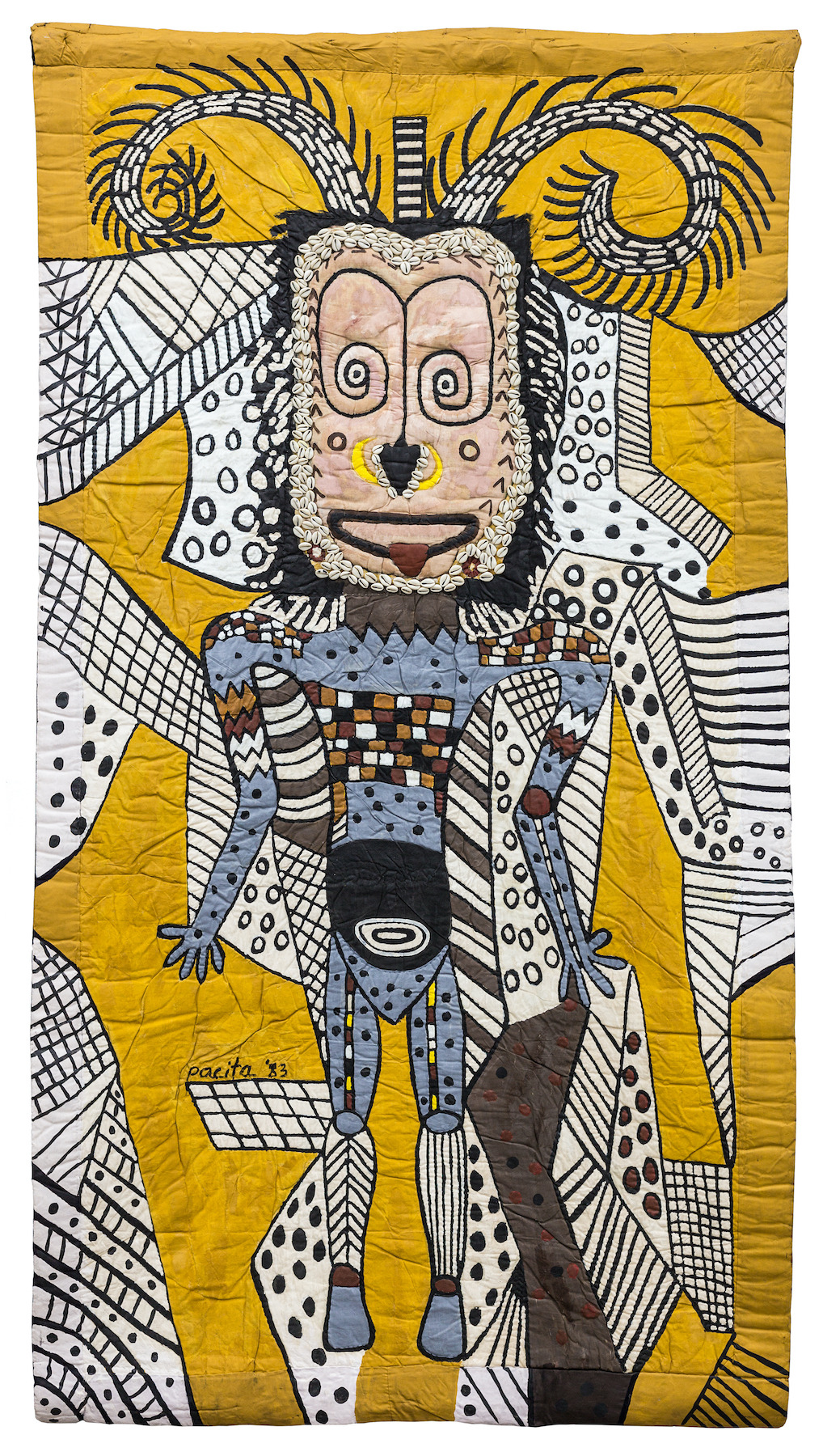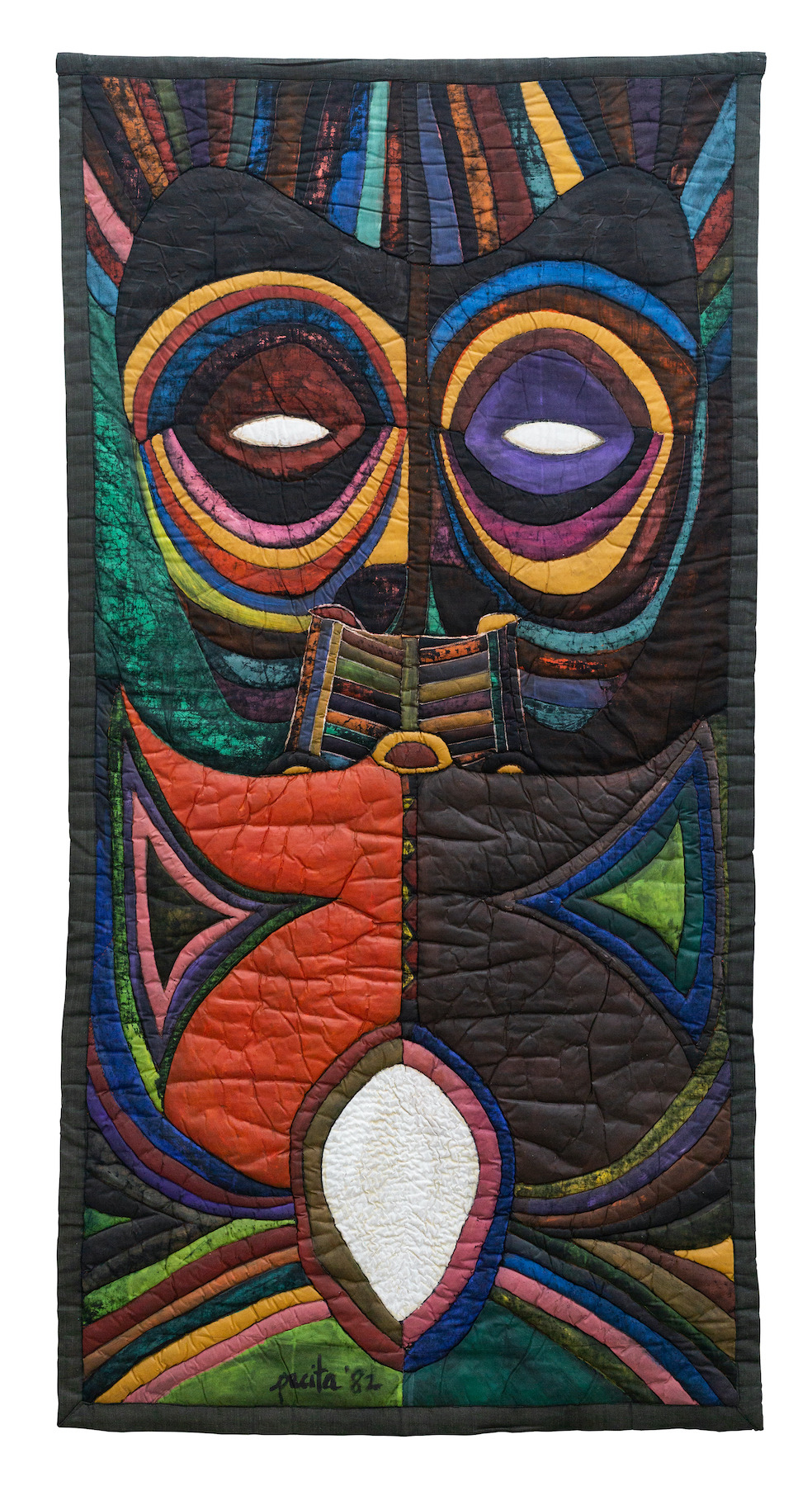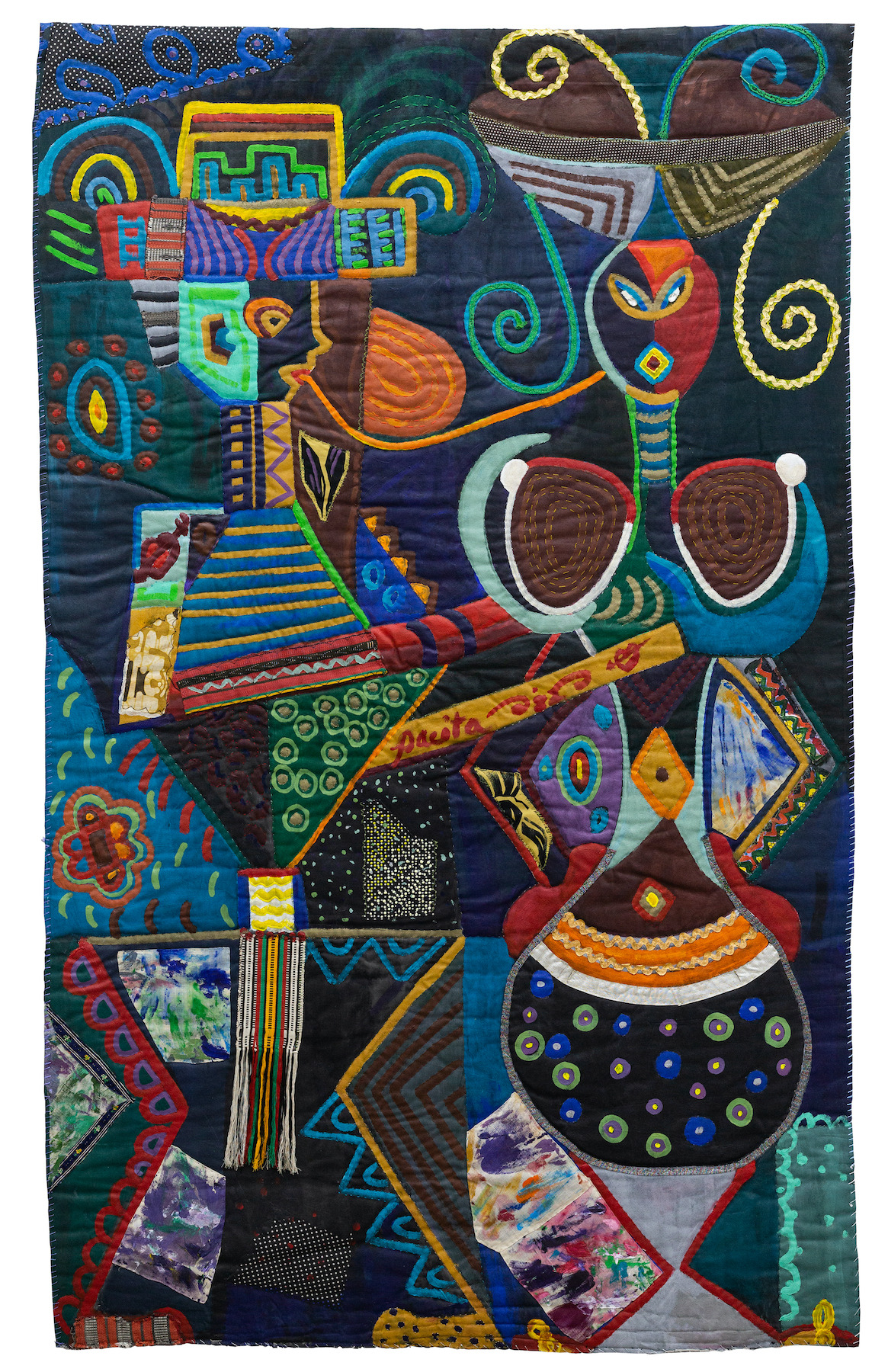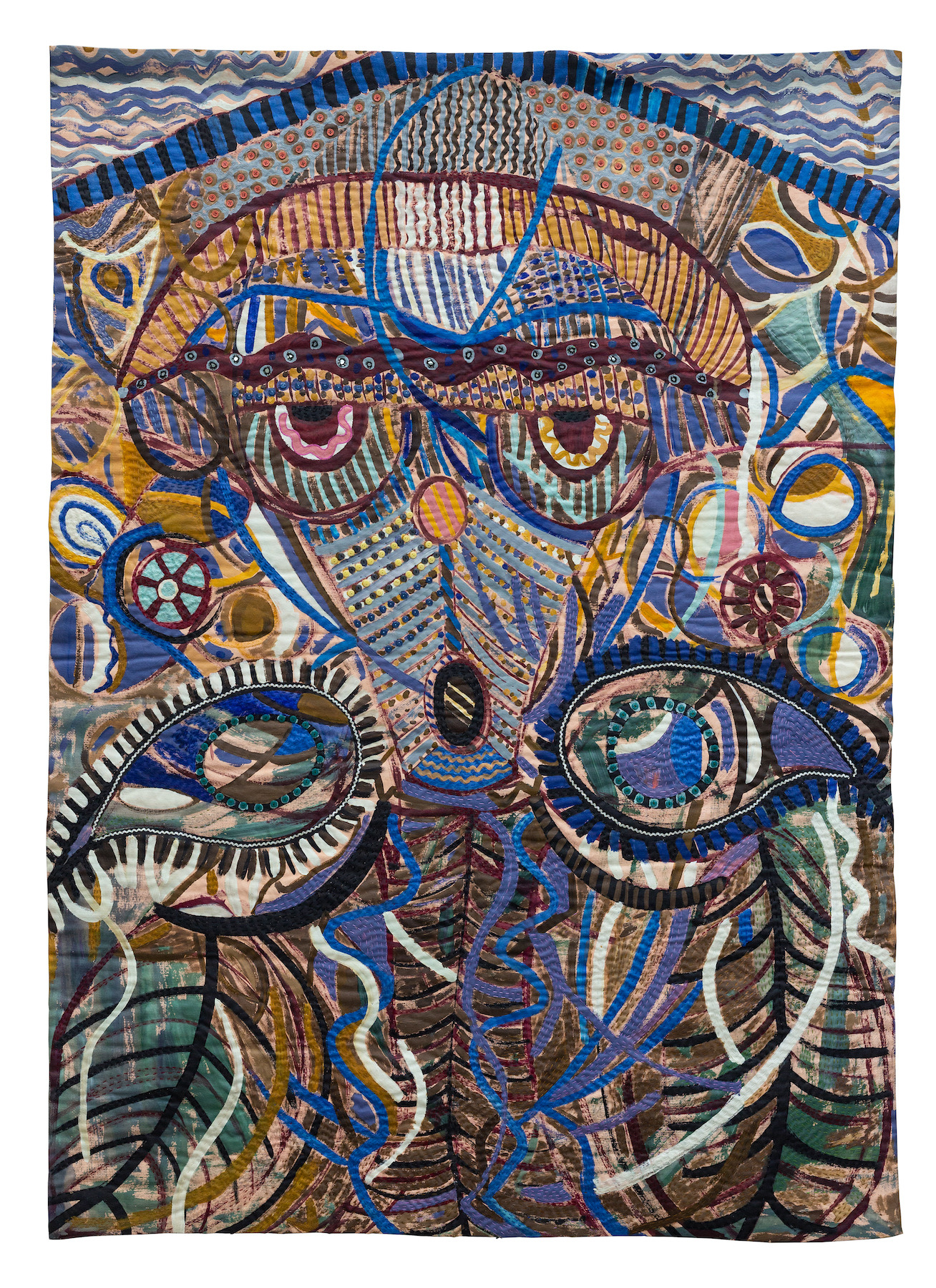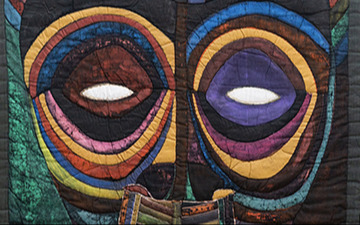
Art Basel Online Viewing Room: 20c - Pacita Abad: Masks and Spirits
Pacita Abad
Art Basel Online Viewing Room
About
SILVERLENS presents the work of the late celebrated Filipino-American artist Pacita Abad. The presentation will focus on her 'Masks and Spirits' series, made between 1982 to the end of the 20th century.
It is travel that prospects form in Pacita Abad’s oeuvre. Until her death in 2004, Abad spent her life travelling, always finding time to set up studio—from Sudan to Boston to Bangladesh, Abad made art. The images in her paintings intimate an itinerary of a woman artist in whose hands textile becomes technology of form as much as it is archaeology of life and material. This itinerary is shaped by a subjectivity steeped in the complexities of a worldly womanhood: the political pedigree from the island province of Batanes in the northern Philippines, the feminized labor of sewing as heirloom from her mother and grandmother, the travels that she has done as wife to a development economist. It is a prolific practice almost prescient: involving material practice not always thought of as artistic and a method of working that managed without anticipating an audience. While hers is a practice enabled and motivated by a particular form of capital and a subject position for the most part unencumbered by economics, in her career, a particular personage is recognized: a woman entangled in relations of labor and power who somehow manages to unravel for herself a room of one’s own.
Coming off from a successful revisiting of her works at the Museum of Contemporary Art and Design (MCAD) Manila in 2018, Spike Island, Bristol in 2020, and the ongoing Berlin Biennale 2020, Silverlens presents five works exemplifying this particular moment of her poetics at its most articulate and calibrated: textile intimating an aspect of flesh and performing a gesture of skin. Abad’s works materialize the complexity of making art as a woman of color and recalibrate accounts of what is material in contemporary art history.
Visit our online viewing room here.
Culled from press features dating back since the 1970s, view a glimpse of Abad's colourful practice.
Read more about our presentation in this essay by Carlos Quijon, Jr.
Pacita Abad (b. 1946, Batanes, Philippines; d. 2004, Singapore) was the daughter of a congressman, who had hoped that she would traverse a similar political path. But the course of Abad’s life changed when she decided to take up painting, after a year of travelling in Iran, Afghanistan, Pakistan, India, Sri Lanka, Myanmar, Thailand, Laos, Taiwan, and Hong Kong in 1973. Abad later married a developmental economist, Jack Garrity, whose work predisposed them to travel to developing countries. Her experiences in these remote regions informed her subject matter and aesthetic practice: she learned traditional art techniques from in each of the places she visited and incorporated these methods into her art. In the late seventies and early eighties Abad introduced a quilting method onto her canvasses, which she called trapunto. Here, she layered various objects — stones, sequins, glass, buttons, shells, mirrors, printed textile —atop the surfaces of these paintings, before stuffing and stitching them.
Characterised by vibrant colour and accumulated material, these large scale trapunto paintings traverse a diversity of subject matter: from tribal masks and social realist tableaus, to lush and intricately constructed underwater compositions and abstractions. She lived and travelled in numerous countries –from Bangladesh to Sudan, Sudan to Jakarta, Jakarta to Boston, Washington D.C. to Manila – and it was this itineracy that defined and shaped Abad’s cross-cultural practice. Abad’s work work brought together images and experiences across cultures, economies and histories. Her pieces offered global reflections long before the discourses of globalisation and transnationalism were felt in the art world.
Abad’s work has been featured in solo exhibitions at the National Museum, Jakarta, Indonesia; Hong Kong Arts Centre, Hong Kong, The Museum of Philippine Art, Manila; Cultural Center of the Philippines, Manila; Bhirasri Museum of Modern Art, Bangkok, Thailand; Singapore Tyler Print Institute, Singapore; The National Museum for Women in the Arts, Washington, D.C.; and the National Center of Afro-American Artists, Boston, among others. She has participated in numerous group exhibitions, including: Beyond the Border: Art by Recent Immigrants, Bronx Museum of the Arts, New York; Asia/ America: Identities in Contemporary Asian American Art, a traveling exhibition organized by the Asia Society, New York; Olympiad of Art, National Museum of Modern Art, Seoul, Korea; 2nd Asian Art Show, Fukuoka Art Museum, Fukuoka, Japan and La Bienal de Habana, Havana, Cuba. Abaddied in Singapore in 2004.
Works
